Table of Contents
What Does It Mean When A Baby Stares At You
What Does It Mean When A Baby Stares At You? You must have thought of it quite often.
There is no better feeling than seeing your baby for the first time. Or the comfort you feel when you see them sleeping peacefully. Or those fleeting times when you look at a perfect baby and wonder, “Did I make that?”
As parents, we can’t help but look at our kids. When they’re sleeping, we look at them. When they’re awake, we stare at them. When we want them to stop, we stare at them. That. Yes. Now. And we’ll never stop staring because some of us will always be amazed that they’re ours.
But research shows that babies spend a lot of time just staring. Babies do love to stare. It doesn’t matter if it’s a parent or a stranger at the grocery store playing peek-a-boo. Can they see someone (or something) right in front of them? Baby will be looking.
Babies stare for many different reasons. Most are normal steps in a child’s development, but staring can sometimes be an early sign of problems or disabilities in development.
Read on to learn what it means when a baby stares at you.
What Does it mean when a baby stares at you?
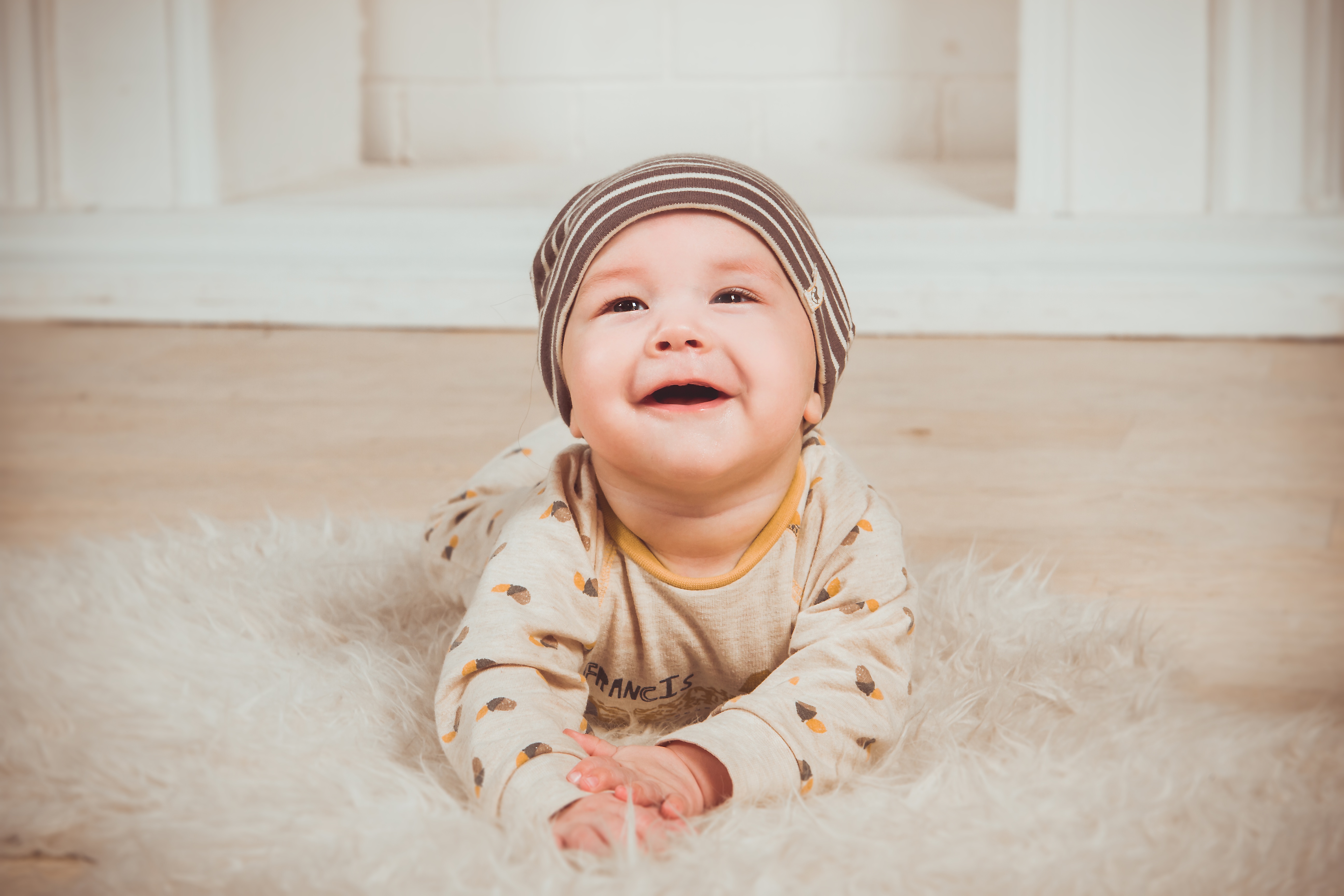
This answer is heavily influenced by whether the baby is yours or someone else’s, as well as how well the baby knows you. If your baby is staring at you, it could be because they adore you and see you as their primary source of comfort and safety. However, regardless of your relationship with the baby, they may be staring because they notice something interesting about you.
What You Should Know About a Baby’s Vision
Before you figure out why your baby stares, you need to know how they see. Here are some important things to know about your baby’s eyes and vision as they grow:
- Because newborns are sensitive to light, their pupils get very small in bright light.
- Things that are close to the baby are easier to see than things that are far away. Its because their central vision is still developing, while their side or peripheral vision is more developed.
- During the first two months, your baby’s eye may cross or move to the side.
- At three months, your baby can focus on things that are 8 to 12 inches away.
- When your baby is five months old, they start to understand depth, which means they can tell how far away something is.
Why Does Baby Stare?
Once you know how your baby sees, you can see that they stare at people and things that catch their attention. Since your baby’s eyes aren’t fully developed yet, they are more interested in bright things, moving, or having different colors. Because of this, your baby will often look at bright things or ceiling fans. By the sixth or eighth week, your baby can see better than it could before. Now, they look at faces, and they look at people more than they look at inanimate objects.
What to do if a baby stares at you?
You’ve locked gazes with a child. They talk as you make ridiculous faces, pushing you to smile with missing teeth. It’s no secret that a babyface is enticing to look at. However, you may be unaware that initiating eye contact with a baby is a crucial developmental milestone.
One of the first milestones for babies is eye contact, which signals to parents that their baby has noticed and acknowledged them. A parent’s and child’s reciprocal gaze is a shared communicative experience. Long before words are exchanged, a parent and baby can communicate through gestures such as facial expressions and smiles.
When a newborn looks at you, it’s both emotional and intellectual. A baby can eventually make the connection between individuals and their services. For example, when a newborn sees its parent, they may associate food with a feeder. Babies will learn to recognize sounds and individuals through eye contact, and that grins indicate love and compassion. This key developmental milestone causes a newborn to feel peaceful and engaged. As parents, we aim to create a mutual gaze to assist our children in developing these emotional qualities.
When a baby stares at you, make use of the chance to smile, speak, sing, and gesture inside the infant’s line of sight. If your infant is looking at something, you can use this as a teaching opportunity to help with language development.
What Things Do Babies Stare at?
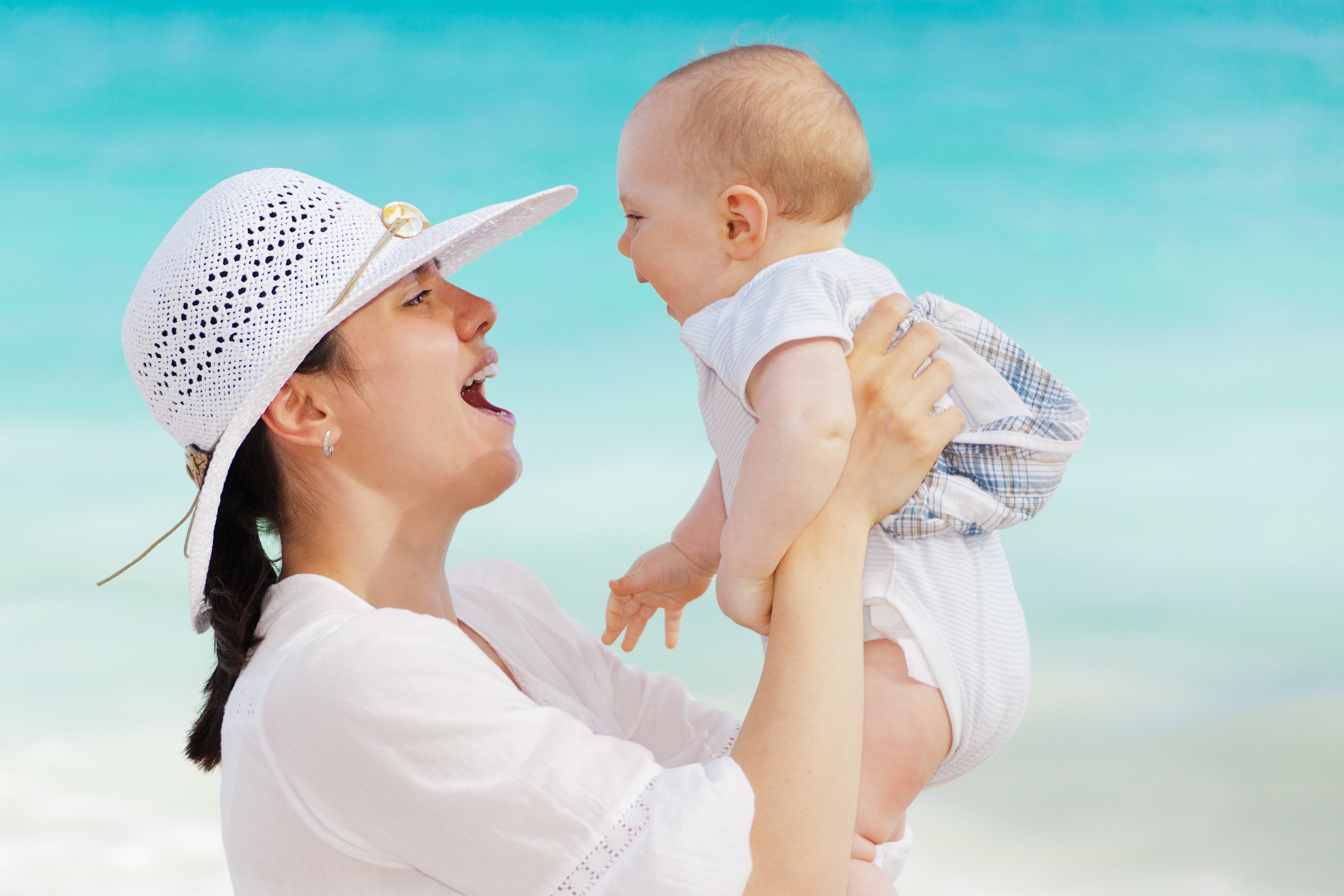
Do you know what catches your baby’s attention? So, here are some things your infant finds interesting:
1. Moving Objects
Observing moving objects like ceiling fans stimulates your baby’s quickly developing brain. So Looking at moving objects stimulates and captivates your infant, which is also an important aspect of your baby’s visual development.
2. Attractive Faces
Babies love to look at pretty faces even when they are only three or four days old. Some features of a face that stands out will interest your baby and keep their attention.
3. Unique Features
Some interesting things about a face or object will catch and keep your baby’s attention. It could be like glasses, a beard, bright hair or lights, or a different texture.
4. Contrasting Things
Your baby may often stare at contrasting colors or shapes because they intrigue them.
5. Nothing
You might see your baby smiling while staring into space. You don’t understand why babies smile and look at nothing. Your baby’s eyes are still growing, so it’s normal for them to look at things that are too far away for them to see. So, if you see your baby staring at nothing, you should know that he or she is training their eyes and vision to see things eventually.
Common Reasons Why Babies Stare
Some of the common reasons why your baby stare is:
1. To Know the World Around Them
Your baby’s eyesight at birth is 20/200. So when they look at things far away, they have to stare to figure out what they see. Also, they are very interested in things that move, like your lips and eyes. So the baby stares to get to know you and the things around it.
2. When they’re tired
When your baby is tired, they stare because they can’t stop looking at interesting things around them.
3. To Communicate
Your baby can’t talk or smile yet, so it looks at you to make a connection.
4. When something piques their interest or captures their attention
Your baby will stare at anything that catches their attention or interests them. They may also keep looking at something new or different.
Why Is a Baby Staring at You and Your Family?
Have you ever thought about why babies stare? Here are some of the reasons your infant is staring at you and other family members:
1. You Fascinate Them
Your baby is fascinated by faces and will stare at yours and other family members. It’s also a way for them to connect with you.
2. Listen to Your Voice
Because your baby’s vision is still growing, they will notice your sound and look towards you. They are instinctively drawn to the sound of your voice.
3. Attracted to Your Jewelry or Glasses
Your baby is fascinated by your jewelry, glasses, or other items. As a result, they are drawn to them and stare at them intently.
4. You Are Good Looking
Your baby’s most common reason for staring at you or other family members is that you are appealing. Babies enjoy looking at attractive faces.
What Causes a Baby to Stare at Objects and Open Spaces?
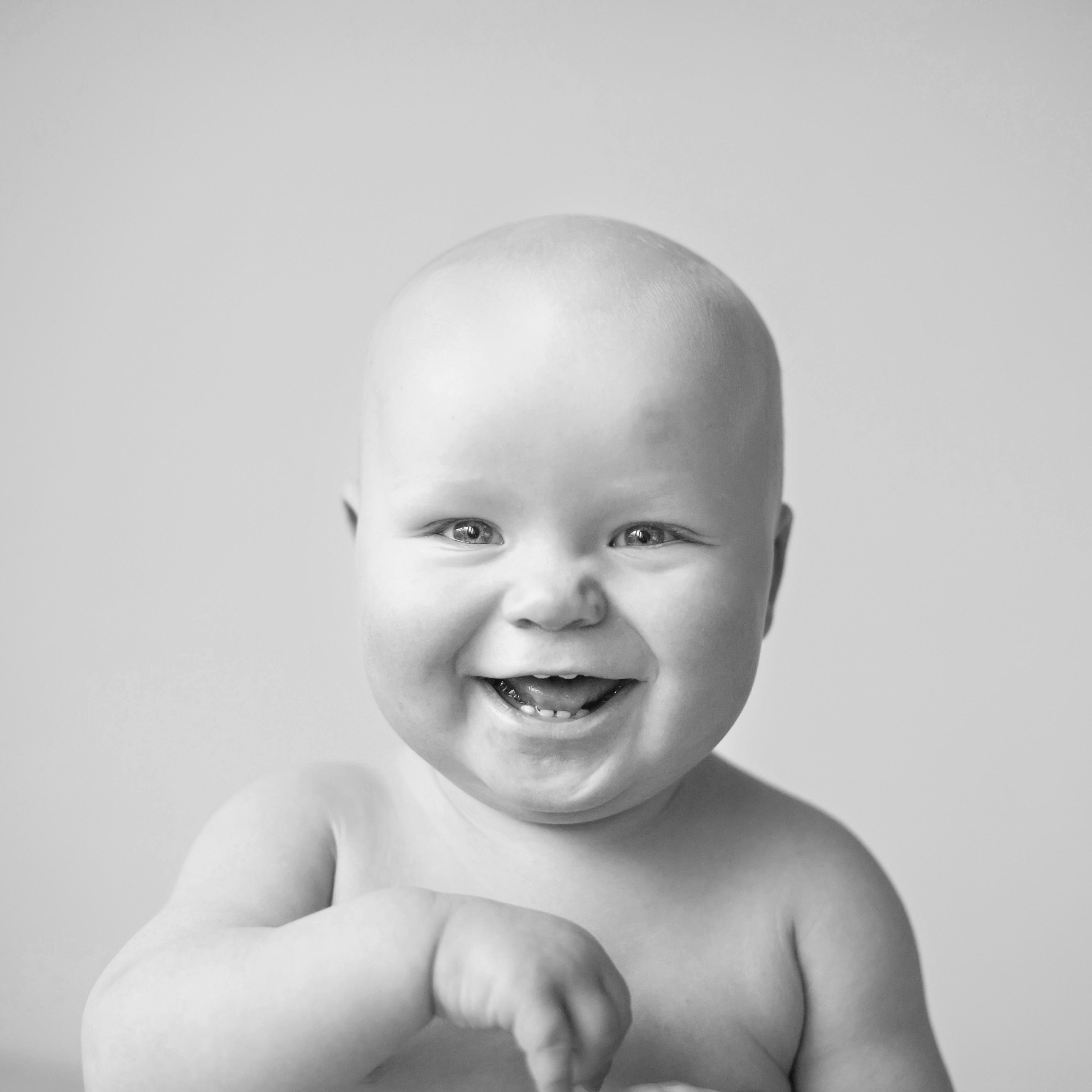
You could wonder why your baby is staring at items or open spaces. The following are some possible explanations for your baby’s behavior:
Baby Stares at Objects
Your baby is staring at objects for the following reasons:
- Movement: Your baby is very interested in how you move.
- Color and pattern: The baby is interested in different bright colors and patterns. So your baby looks at things that shine, have bright lights, and are brightly colored.
- Something new or different: They are very involved when your baby sees something new or different.
Baby Stares Into Open Spaces
Sometimes your baby will stare into space or at nothing. It’s because of the following:
- Processing the surroundings, Your baby takes in everything around it and learns from it. Their small brain makes sense of everything new it sees and learns.
- Everything is fascinating – Everything is new and fascinating for your little one. So, babies stare at whatever gets their attention, an object or a blank space.
- Just checking – Since everything is new to your baby, he or she may stare into space to see what’s there.
Why Does a Breastfeeding Baby Stare?
Babies as young as a few months old or as young as a few weeks old can see well enough to look at their mothers’ faces. So, when they are nursing, they look at their mother’s face or make eye contact with her to talk to her. So, while you’re nursing, your baby will look at you to talk or get close to you.
What Causes a Baby to Stare at the Ceiling and Lights?
Your baby can’t stop looking at the lights or ceiling. This is because of a few things. Most babies can’t move their heads, so they stare at lights or the ceiling. Babies stare at something bright or moving because they can’t see well. Sometimes the lines, light fixtures, fan, or shadows of other things on the ceiling catch their eye.
Why Does Baby Stare at Strangers?
When you go out, your baby stares at people she doesn’t know, and you don’t know why. Your baby does this because strangers look different or the same as people in their family or find them interesting. Sometimes, a stranger may catch your baby’s eye because of a unique trait or item, like a beard or glasses.
Why does my baby gaze away?
Babies can feel too much or too much stimulation, just like everyone else. Sometimes there are too many things going on—too many lights, sounds, and people.
If your baby is looking at a wall (or into space) instead of what they were doing, it could mean they are tired and need a break. The world is always full of new things for a baby to learn, and sometimes they need time to figure it out. “Sensory overload” causes this kind of processing or “empty” gaze.
There are many different signs of sensory overload. When a baby is overstimulated, he or she may stare or look away from a person or activity. Your baby may also be hard to calm down, fussy, or cry.
Experts say you should take your baby away from the activity and give them a safe resting place. A baby’s senses can be calmed by being rocked or given a soother.
Learning and stimulation go hand in hand, so if you know the signs of overstimulation, you can help your baby find balance before they get too tired.
Could a blank stare mean something else?
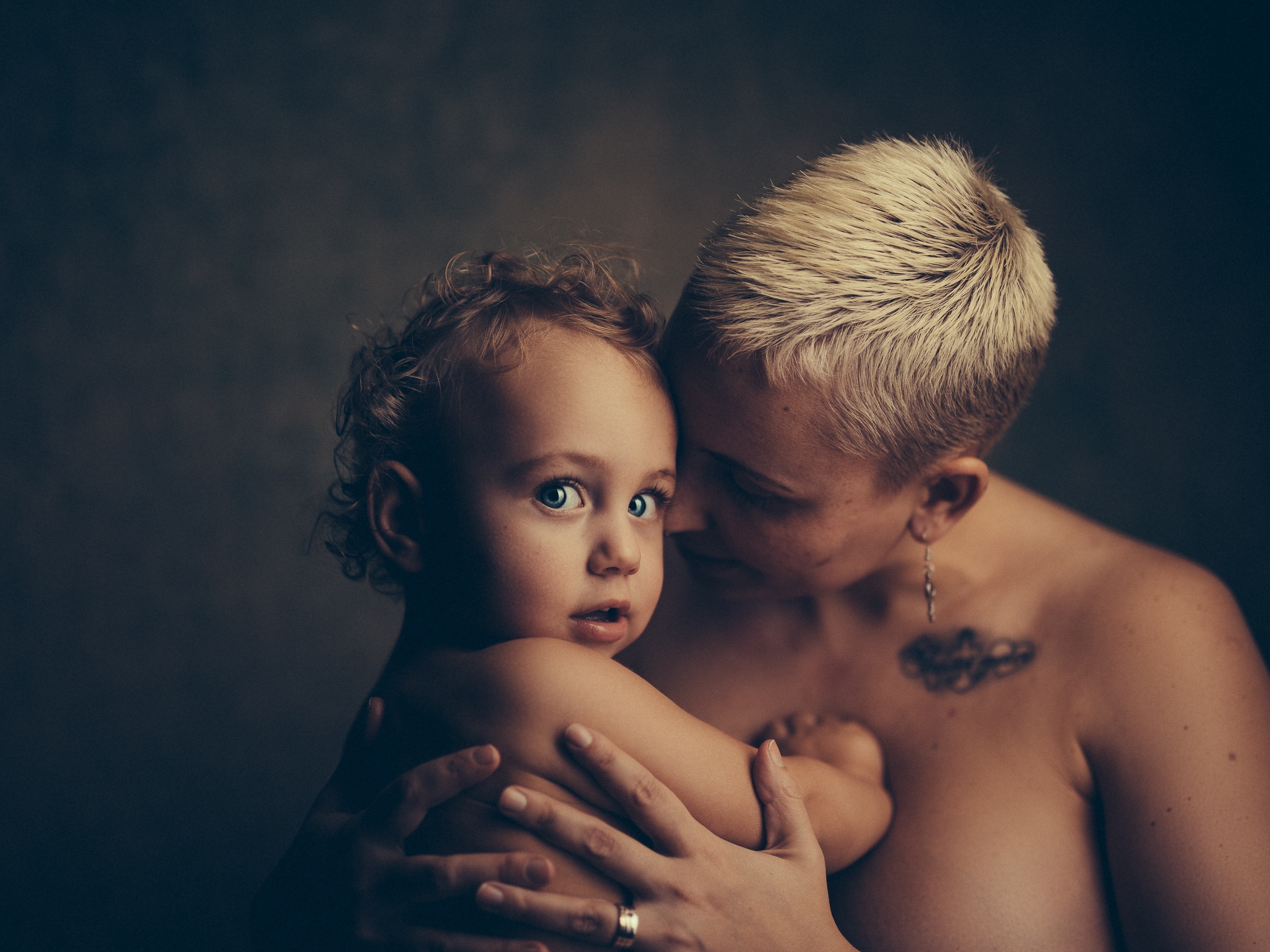
Eye contact is a big step in a baby’s social, emotional, and intellectual growth, which is why some parents worry if their baby can’t do it. Even though a blank stare can be harmless (and, as we learned, a sign of being overstimulated), it could also be a sign of a delay in development.
Autism is a range of disorders in babies and young children. Children with autism will take longer to reach important developmental milestones like talking, playing with others, and making eye contact.
Autism is a spectrum, so not all signs and symptoms are as obvious as others. But if it’s caught when a child is young, treatment can make the most of how flexible a young brain is.
If you see your baby or toddler avoiding eye contact, like when they don’t look at you when you feed them or smile at them, you should talk to your doctor about it. Babies on the autism spectrum may find it hard to follow things they see or copy facial expressions.
Most of the time, the parent knows the most about their child’s development and may have a gut feeling that their child needs more help.
Important Milestones
Some studies say babies can recognize their parents as soon as a few days after birth, while others say it could take up to two months. Generally, between the age of 6-10 ten weeks, your baby will begin to gaze at you with more intent. This is also when you’ll probably see your first smiles. Around 3 months, babies should be able to move like their caretaker or parent. Lastly, by the time they are 9 to 11 months old, babies will have a “grown-up” understanding of how their eyes work, knowing they are meant to look and see.
How to Get Your Baby to Make Eye Contact
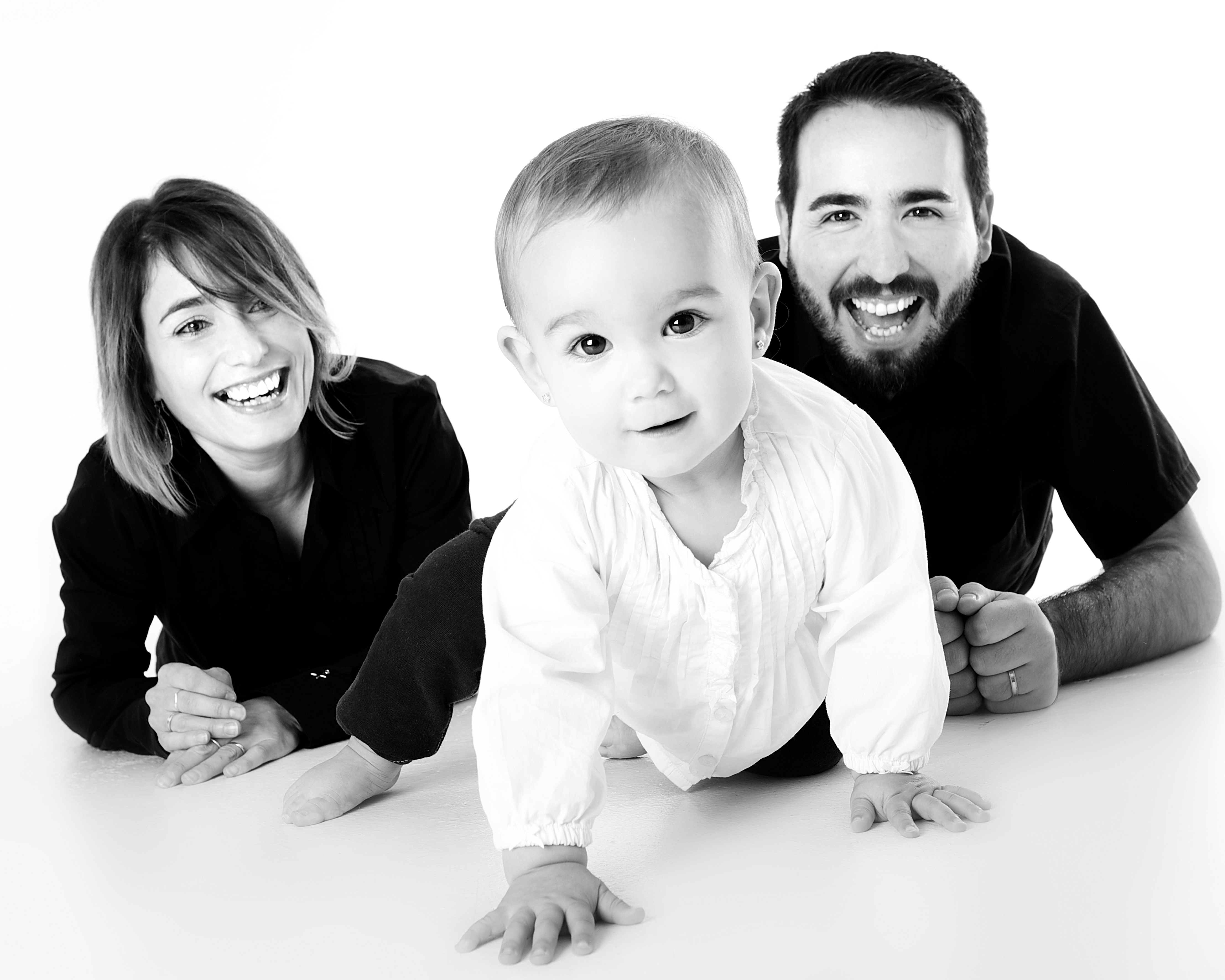
To get your baby to make eye contact with you, hold him or her about 10 to 20 inches away and look into their eyes. But importantly, a baby should make eye contact first. A parent should interact with the baby by smiling, singing, talking, and gestures while the baby can see them. Also, a look between two people is much more powerful when you touch them, like with a tickle or a hug.
This helps your baby feel safer and secure by promoting attachment.
In everything, it’s important to know where the limits are. Eye contact is a good way to get babies to pay attention and interact, but giving them time and space to take in their world is also important. Your child will quickly connect with you and their surroundings (and the tips above) by doing what they say. If you’re worried about how your baby is growing, you should always talk to a professional.
Amazing Facts About a Baby’s Vision
Some interesting facts about how a baby sees are:
- The eyes of a baby are very sensitive to light. So, a baby’s pupils get smaller in front of bright lights. Bright lights also make them more alert and wake up their senses.
- A baby’s central vision is still developing, so they can see things close up clearly but have trouble seeing things far away or seeing them as blurry.
- A baby can tell the difference between patterns and textures based on how light or dark a color is. They also like things that are big and have bright colors.
- Babies like to look at bright things. This is why toys for babies are brightly colored.
When Should You Worry About Baby’s Staring?
Even though it’s normal for babies to stare and usually doesn’t mean anything is wrong, there are still things you should watch out for. You should talk to a pediatrician if your baby shows any early signs. The warnings are:
- Your baby’s eyes look crossed or sometimes move in strange ways.
- The pupils of your baby look cloudy or white.
- Even though your baby is two months old, he or she still doesn’t notice faces.
- Even though your baby is 4 months old, he or she still can’t follow moving things.
In their first year, babies change a lot. Your baby’s eyes will grow stronger, and he or she will start to look at different things to learn and understand them. But it’s best to talk to your baby’s pediatrician if you notice anything strange or are worried about how your baby sees or acts.
Final words
Hope you got an understanding of why your baby might be staring at you all the time. Even though they can’t stop looking at you, don’t worry! It’s a normal part of a baby’s growth; they’re just trying to learn about the world around them as much as possible.


